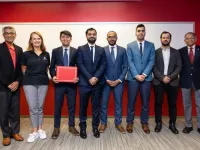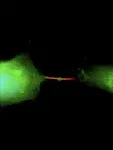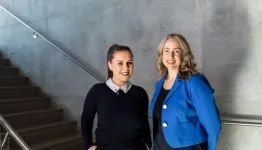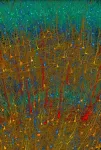(Press-News.org) The Department of Energy’s Oak Ridge National Laboratory, a bastion of nuclear physics research for the past 80 years, is poised to strengthen its programs and service to the United States over the next decade if national recommendations of the Nuclear Science Advisory Committee, or NSAC, are enacted.
“The 2023 Long Range Plan lays out a compelling vision for nuclear science in the United States under multiple budget scenarios,” said Gail Dodge, physicist at Old Dominion University and chair of the NSAC. “Implementation of the Long Range Plan’s recommendations will maintain the nation’s leadership and workforce in nuclear science.”
On Wednesday the NSAC, which advises DOE and the National Science Foundation on nuclear physics, approved a 10-year roadmap, or Long Range Plan. It includes four key priorities that would advance the nation’s nuclear science research program and set the direction of research for another generation of scientists.
The recommendations would give ORNL a continuing critical role in helping maintain the nation’s leadership in nuclear physics for at least the next decade — solving mysteries of how the smallest particles in the universe behave and using that understanding to advance medicine, quantum science, energy, national security and other areas that improve the lives of people everywhere.
Research in nuclear physics — the science of atomic nuclei and their constituents — helps us understand how virtually all ordinary matter in the universe originated and evolved. The cutting-edge research on particles is also used in isotope production, medical diagnosis, national security, energy, nuclear treaty verification, the environment and nuclear applications.
The highest priority, according to the plan, is increasing the budget for nuclear physics in theoretical, experimental and computational research “to capitalize on the extraordinary opportunities for scientific discovery made possible by the substantial and sustained investment of the United States.” This would expand “discovery potential, technological innovation, and workforce development to the benefit of society.” This recommendation, if adopted, would ensure user facilities throughout the country would continue to operate at the highest level and reap the most scientific benefit.
“Each one of the four recommendations has a large impact for ORNL,” said David Radford, ORNL physicist and head of the lab’s Fundamental Nuclear and Particle Physics Section. For example, another recommendation is for funding of multiple large experiments to search for neutrinoless double beta decay; one of these experiments has leadership and significant participation from ORNL scientists. The advisory committee recommends that construction of ton-scale detectors addressing fundamental physics should be a top budgetary priority.
That research, which aims to solve the problem of how matter came to dominate over antimatter, will provide insight into the origin and mass of the neutrino, and in so doing could rewrite the Standard Model of particle physics. The research includes experiments known as CUPID, LEGEND and nEXO proposed by international collaborations. ORNL scientists, including Radford, are leading DOE’s contribution to building LEGEND.
“This could help explain the matter-antimatter imbalance in the universe,” Radford said. “This plan reiterates that the experiment should go forward. That’s very important for this extremely compelling and exciting physics.”
Radford and Cynthia Jenks, ORNL’s associate laboratory director for the Physical Sciences Directorate, said the ORNL impacts at a rollout of the plan on Friday after the plan was released to the public on Wednesday.
Another committee recommendation calls for the “expeditious completion” of the Electron-Ion Collider, a massive particle accelerator that would be built at Brookhaven National Laboratory. Already, ORNL physicists are hard at work designing and building a detector for the system, which, like a precision microscope, will illuminate three-dimensional images of nuclear matter, uncovering how particles like quarks and gluons interact and behave. Experiments on the machine could help answer longstanding questions about the fundamental particles of matter.
An additional recommendation is to advance discovery science for society by investing in scientific projects that offer new strategic opportunities. Such opportunities advance computing, nuclear data for medicine, clean energy, national security, nonproliferation, the environment and space — all areas that are in ORNL’s wheelhouse of research and that would bolster ORNL’s research programs, Radford said.
“ORNL certainly does work in these areas, using emerging technologies to meet national needs,” Radford said, adding that programs in nuclear data, advanced computing, sensing, quantum information and nuclear data all make use of not only physicists but engineers, data scientists and other experts. An example is ORNL’s Advanced Radiation Detection, Imaging, Data Science and Applications group, which is invested in these research areas. Also, high-performance computing research impacts physics experiments around the world, including at CERN in Switzerland and elsewhere.
DOE facilities, such as ORNL’s Spallation Neutron Source, or SNS, an Office of Science user facility, are critical to fundamental nuclear physics research by ORNL researchers and other laboratory and university scientists around the world. An important experiment at SNS is the neutron electric dipole moment experiment, which aims to make the world’s best measurement of this property, an accomplishment that would be “paradigm shifting,” the committee says. Similarly, ORNL scientists use DOE’s Facility for Rare Isotope Beams, or FRIB, also a DOE Office of Science user facility, at Michigan State University, which is producing exciting results on decays of never-before-produced isotopes. ORNL helped lead construction of a day-one detector for that facility that has already produced high-impact results.
Such scientific advances rely on a workforce trained in science, and the plan calls for resources to help build the next generation of STEM researchers. This includes ensuring graduate students are fairly compensated and “expanding policies and resources to ensure an environment that is safe and respectful to everyone,” said Shelly Lesher, a physicist at the University of Wisconsin, La Crosse. One of the architects of the workforce development section of the plan, Lesher added that the plan calls for exposure of the field to broader populations to increase representation. Like all 17 of America’s DOE national laboratories, ORNL stands to benefit from policies that make it possible for people from all walks of life to join the field, Radford said.
Said Radford, “The training of the future workforce at this lab will help the security and economic prosperity of the country. This is the voice of the community saying what its priorities are and that the nation would benefit tremendously by buying into that and funding nuclear physics at the appropriate level.”
UT-Battelle manages ORNL for the Department of Energy’s Office of Science, the single largest supporter of basic research in the physical sciences in the United States. The Office of Science is working to address some of the most pressing challenges of our time. For more information, please visit energy.gov/science.. — Lawrence Bernard
END
ORNL is poised to have a major role in the future of nuclear physics
2023-10-06
ELSE PRESS RELEASES FROM THIS DATE:
UH energy competition focuses on innovation, commercialization and sustainability
2023-10-06
The world is full of good ideas, but only some of them become viable and real.
“You don’t see the full impact of a good idea until someone figures out a way to convert it to a usable product or service that has value, brings it to market and makes money off of it – this is what makes it a sustainable business,” said S. Radhakrishnan, a retired University of Houston business professor and coordinator of UH Energy’s Innovation Commercialization Competition. “To have a successful energy transition, we need many innovative ideas to be commercialized.”
Keeping this in mind, Radhakrishnan worked hard to grow the second annual Energy Innovation Commercialization ...
Remnant of cell division could be responsible for spreading cancer
2023-10-06
Once thought to be the trash can of the cell, a little bubble of cellular stuff called the midbody remnant is actually packing working genetic material with the power to change the fate of other cells — including turning them into cancer.
It’s a surprise to many people, according to Ahna Skop, a University of Wisconsin–Madison genetics professor, that when one cell divides into two, a process called mitosis, the result is not just the two daughter cells.
“One cell divides into three things: two cells and ...
CPR education drive expanded to London during the 2023 NFL London Games
2023-10-06
Photos will be added to the release link as available.
On average worldwide, fewer than one in every ten cardiac arrest victims outside of the hospital survive.[1] Too many people do not survive from cardiac arrest because those around them are not educated on the lifesaving skills of cardiopulmonary resuscitation (CPR). Knowing CPR can be a lifesaving tactic. On October 7, 2023, the Chasing M’s Foundation - professional football player Damar Hamlin’s charity - the American Heart Association, the British Heart Foundation ...
Possible tool discovered to diagnose common contributor to vascular dementia
2023-10-06
A research team led by the Keck School of Medicine of USC has discovered that a non-invasive eye exam may be a possible tool for screening Black Americans and other people from underdiagnosed and high-risk populations for cerebral small vessel disease, a major contributor to cognitive impairment and dementia. After Alzheimer’s disease, vascular dementia, associated with impaired blood flow to the brain, is the second most common dementia diagnosis.
“Most people with cerebral small vessel disease are not diagnosed until significant brain damage has occurred. Damage to the brain cells is not reversible.” ...
Research reveals disparities in access to quality parks
2023-10-06
In urban areas throughout the United States, it is imperative for all communities to have equal access to high quality parks. These parks can have many benefits for the physical and mental well-being of the residents who live in close proximity to the urban green spaces. For instance, they are a place to socialize and exercise outdoors while also providing vegetation nearby, which can help reduce urban heat.
Yet, in the City of Philadelphia, not all parks are created equal, according to a new study from the University of Delaware.
Using a machine learning algorithm to analyze 285 ...
Offspring of teen, young adult women with cancer history more likely to have birth defects
2023-10-06
The offspring of adolescent and young adult women with a history of cancer face a higher risk of birth defects, according to new research from UTHealth Houston.
A study led by Caitlin C. Murphy, PhD, MPH, associate professor of health promotion and behavioral sciences at UTHealth Houston School of Public Health, was published recently in Cancer Epidemiology, Biomarkers & Prevention.
“Concerns like the health of future children are at the top of mind for many young adults diagnosed with cancer, but they are already so overwhelmed at the time of diagnosis with ...
Benefits of psychedelics in obsessive-compulsive disorder: in search of evidence
2023-10-06
Intrusive thoughts, involuntary repetition of undesirable gestures and behaviors combined with high anxiety... Obsessive-compulsive disorder (OCD), a disabling condition, affects around 2% of the population, regardless of age. It is a strong vector of isolation since patients disproportionately focus on various obsessions—to the detriment of relationships, work, and leisure.
Treatment mainly consists of cognitive-behavioral therapy (CBT) that allows patients to readjust their thought patterns, combined with antidepressants. Unfortunately, the effects are slow to appear, and 30 to 40% of patients do not respond at all. “In this context, an option ...
World-first research breakthrough sparks new hope for bowel cancer patients
2023-10-06
Every year, over 15,500 Australians are diagnosed with bowel cancer, and it is the second leading cause of cancer deaths in the country. Over 1,700 (one in ten) of those diagnosed are young Australians aged under 50, and this incidence is increasing.
There is an urgent need to discover more effective treatments and improve bowel cancer screening, particularly for early-onset bowel cancer (those aged 25-49 years). Australians born in 1990 onwards have double the risk of developing bowel cancer compared with those born in 1950. These younger bowel cancer patients often have poorer outcomes as they typically present with late-stage ...
3D genome architecture influences SCID-X1 gene therapy success
2023-10-06
Patients with X-linked severe combined immunodeficiency disorder (SCID-X1), sometimes called “bubble boy disease,” are born with a defective gene that prevents them from producing immune cells. Gene therapy from St. Jude Children’s Research Hospital restored the immune system in multiple infants with SCID-X1 in 2019 by supplying copies of the corrected gene. Through ongoing efforts to monitor patient safety, St. Jude scientists recently documented where the gene copies integrate into patient DNA, providing a foundation to understand the biology and safety of using lentiviral vectors. The findings were published today in Science Advances.
“We ...
Human brain seems impossible to map. What if we started with mice?
2023-10-06
The human brain is a tangled highway of wires emanating from nearly 100 billion neurons, all of which communicate across trillions of junctions called synapses. “Depressingly complex,” Harvard neuroscientist Jeff Lichtman calls it. The only way to understand this highway, says Lichtman, is to create a map.
Lichtman, the Jeremy R. Knowles Professor of Molecular and Cellular Biology, has spent several decades generating such maps, and in doing so has pioneered a field known as “connectomics.” ...






